Oceana.
oceana.org
BLUEFIN BLUES
oceana’s new campaign to save the tigers of the sea U.S. leads the world in protection against shark finning author taras grescoe talks sustainable seafood
SharkS gEt a BooSt PLUS

FALL 2008
BoarD oF DIrECtorS
Keith Addis, Chair
Dr. Kristian Parker, Vice Chair
Simon Sidamon-Eristoff, Secretary
James Sandler, Treasurer
Herbert M. Bedolfe, III
Ted Danson
César Gaviria
María Eugenia Girón
Stephen P. McAllister
Michael Northrop
Dr. Daniel Pauly
Sally-Christine Rodgers
Sam Waterston
Valarie Whiting
oCEaN CoUNCIL
Anne Alexander Rowley, Chair
Dr. Sharon Benjamin
Andrew Bevacqua
Gerald Breslauer
Pierce Brosnan
Beth and Dan Cort
Philippe Cousteau
April McClain-Delaney
Kelsey Grammer
Thomas Hansen
Lea Haratani
Hardy Jones
Barbara Kohn
Larry Kopald
George Lewis, Jr.
Drew Murphy
Dr. Wallace J. Nichols
Jimmy Olmes
Mark E. Ryavec
Josh Simcox
Victoria Stack
Peter Stranger
Bob Talbot
Christiane Turner
Karen White
Annett Wolf
oCEaNa
Chief Executive Officer
Andrew Sharpless
Executive Vice President Jim Simon
Senior Vice President for North America/Chief Scientist Michael Hirshfield, Ph.D.
Vice President for Europe Xavier Pastor
Vice President and Senior Advisor
Jim Ayers
Vice President for Strategic Marketing and Communications
Matthew Littlejohn
Vice President, Global Development
Bettina Alonso
Vice President, Operations and CIO
Romanus Berg
Director, Pacific Susan Murray
Costco posts mercury warnings
In response to pressure from Oceana and its supporters, wholesale chain Costco decided in July to begin posting the U.S. Food and Drug Administration’s warning about mercury in seafood. The announcement came just as Oceana released a report on the status of its campaign to persuade stores to post signs.
Oceana’s report, Super Markets: Grocers Increasingly Posting Mercury Signs at Seafood Counters, showed that the number of stores posting signs nearly tripled since the initial analysis conducted two years earlier.
With Costco, Kroger and Harris Teeter now posting the signs, more than 6,400 grocery stores nationwide post the FDA warning. Oceana’s Green List now accounts for 36 percent of the major grocery stores in the country. The state of Washington had the greatest percentage of stores posting signs with 95 percent of its major grocery stores on Oceana’s Green List, largely due to
Chile protects whales
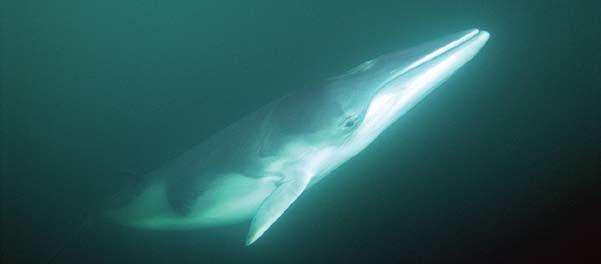
In June, Chilean President Michelle Bachelet issued a decree indefinitely extending a moratorium on hunting whales that was due to expire in 2025. In addition, President Bachelet approved legislation to create a whale sanctuary in all Chilean waters. This includes 3.3 million square miles of ocean, a space as big as the continental United States.
President Bachelet’s declaration came after campaigning by Oceana and other conservation groups. She announced the decree from a whaling processingplant-turned-museum in Quintay, Chile, on the opening day of the International Whaling Commission’s annual meeting, held this year in Santiago.
While a whale sanctuary already exists in the Southern
decisions made by Safeway and Costco. In contrast, fewer than 2 percent of the major stores in Florida, Iowa and Oklahoma were posting signs.
“This is an exciting victory because it enables so many more shoppers to get the information they need to protect themselves and their families,” said Jackie Savitz, Oceana’s senior director for pollution campaigns. “Mercury contamination can cause developmental problems in young children, so education is key.”
Costco is the fourth largest general retailer in the United States, after Wal-Mart, the Home Depot and Kroger, and operates approximately 386 warehouse stores in 40 U.S. states.
To learn more and to find out if your local grocery store posts the FDA warning, visit the Green List at www. oceana.org/gl.
Ocean, Japan has continued to hunt whales under the guise of scientific research. The new sanctuary would prevent any hunting – scientific or otherwise –in Chilean waters. Bachelet’s bill would criminalize whaling, punishable by imprisonment. In addition, the bill would require regulation of whale watching businesses to ensure their sustainability.
Oceana will continue to campaign for approval of the new sanctuary by the Chilean parliament.
Chile’s nearly 4,000 miles of coastline serve as an important migratory corridor for whales. The new sanctuary will be home to half the world’s cetacean species, including critically endangered blue whales, the largest animal ever to live on earth.
Suzannah Evans
Keith Ellenbogen
t he Chilean coast is home to 41 speces of cetaceans, half the whale, dolphin and porpoise species in the world.
EXCLUSIVE, WEB- oNLY C oN t EN t: www.oceana.org/newsletter
2 Fall 2008
EDItorIaL StaFF Senior Editor
Graphic Design
Orlowski
Online Editor Emily Fisher
Lindsay
MakINg WaVES C oVE r P hoto : ©
© OCEANA | Eduardo Sorensen
World’s largest fishery to reduce discarded salmon catch
The world’s largest fishery has taken the first step toward reducing wasteful king salmon bycatch. After pressure from Oceana and its allies, the North Pacific Fishery Management Council moved forward in June on capping salmon bycatch in the Alaska pollock fishery.
In 2007, the Alaska pollock fishery caught and killed a record 130,000 king salmon as unintentional bycatch, more than two times the amount caught in 2003. Many of these salmon killed as bycatch would have otherwise returned to rivers in Alaska and the Pacific Northwest this year. Also known as chinook salmon, the population of these fish has dropped so low that salmon harvests in Alaska have declined considerably, and the 2008 salmon season was cancelled in Oregon and California. Just 70,000 salmon returned to spawn in the Sacramento River last fall, less than one-tenth of the amount that returned in 2001.
“Salmon stocks are in trouble throughout the Pacific,” said Jon Warrenchuk, a marine scientist with Oceana. “Wasting salmon as bycatch is unconscionable. A cap on salmon bycatch in the pollock fishery is long overdue.”
Under the proposed plan, the pollock fishery would be allowed to catch no more than 68,392 king salmon as bycatch, the average number of salmon caught from 2004 to 2006. Upon reaching that number, the pollock fishery would close for the rest of the season. The cap is contingent upon the pollock industry establishing an incentive program that also addresses bycatch on a vessel-by-vessel basis.
The Alaska pollock fishery catches more than two billion pounds of pollock a year, often bound for America’s fast food restaurants in the form of frozen fish sticks.
Pristine ecosystems preserved
In August, the U.S. National Marine Fisheries Service closed nearly 180,000 square miles of the Bering Sea to destructive bottom trawling. The closure brings the total area in the north Pacific Ocean protected from bottom trawling to nearly 700,000 miles, and the total for the entire Pacific to 830,000 square miles, more than five times the size of California. In an approach first designed by Oceana and supported by other conservation organizations and local communities, the closures prevent the expansion of trawling into pristine areas, ensuring protections for rare ecosystems for generations to come.

U.S. bears down on shark finning
In July, the U.S. House of Representatives passed the Shark Conservation Act of 2008, which significantly strengthens laws governing shark fishing and cements the United States’ position as a leader in shark protections worldwide. Senator John Kerry introduced the bill in the Senate where it is still awaiting action.
The Shark Conservation Act would require sharks be landed with fins still naturally attached. Shark finning – the removal of shark fins at sea and dumping of shark bodies overboard – was banned in the United States in 2000, but the current law still allows shark fins to be cut off the bodies at sea as long as the fins and carcasses are brought to port in a specified fin-to-carcass weight ratio. This system is difficult to enforce, and collecting data on the species caught is nearly impossible because many sharks look similar with their fins removed.
In addition, the legislation closes a loophole that currently allows for the transfer of shark fins without
Habitat Protection in tHe nortH Pacific
protecting ocean floor habitat from destructive bottom trawling: 695,642 square miles protected to date Land
Habitat protected 2008 (178,145 sq. miles)
Habitat protected 2006 (379,898 sq. miles)
Habitat protected pre-2006 (137,599 sq. miles)
carcasses from fishing boat to transport vessels. The Shark Conservation Act of 2008 also allows the United States to take action against other countries with weaker regulations.
Joined by 11,000 Wavemakers who contacted their individual representatives, Oceana pushed for the strengthened protections. Now, Oceana and its allies will work to ensure that the U.S. Senate passes the bill.
The fishing industry kills more than 100 million sharks a year, including endangered species. Sharks are highly vulnerable to pressure from fishing because of their slow growth and infrequent reproduction.
“This bill will set a standard for the rest of the world to follow and will allow for effective enforcement and data collection, which will be essential for protecting sharks,” said Elizabeth Griffin, a marine scientist with Oceana.
M ak E S oME WaVES: community.oceana.org/act
3 oceana.org MakINg WaVES
50˚0'0"N
60˚0'0"N 60˚0'0"N
180˚0'0" 140˚0'0"W 120˚0'0"W
...atLaNtIC BLUEFIN NUMBErS arE CraShINg. SCIENtIStS arE CaLLINg For a MoratorIUM...

Do you like eating salmon? Tuna? It’s time to pay attention.
If you like salmon, and you’re living in the United States, it’s likely that most of the filets you ate this year started life in an ocean pen in Chile, crammed in with tens of thousands of other fish. For much of this year, that salmon farming industry has been battling a virus called infectious salmon anemia, or ISA for short. Annual production by the largest companies is expected to drop thirty percent.
That’s a big deal for a booming industry. In less than twenty years, salmon has become Chile’s third largest export.
The ISA epidemic has also rattled big American purchasers, including the Safeway grocery chain, which this year sharply reduced its farmed salmon purchases from Chile. Safeway stopped altogether its Chilean salmon purchases from Marine Harvest, a large Norwegian company that owns the majority of salmon pens in Chile.
The virus is not harmful to humans, but the FDA has taken notice of a salmon farming practice that could have consequences for salmon-lovers – the application of vast quantities of antibiotics. Dr. Felipe Cabello, a professor in the Department of Microbiology and Immunology at New York Medical College, has estimated that Chilean salmon companies are using antibiotics at an astounding rate, dosing the fish 170 to 300 times the rate per pound used in salmon pens in Norway.
After pressure from Oceana and others, the Chilean government has agreed to establish standards by the end of this year to reduce the use of antibiotics in fish farming. In the meantime, you might want to make sure you’re ordering sustainably managed, wild-caught Alaskan salmon.
If you’re like many people, the other fish you are likely to order most often is tuna. As a reader of Oceana, you probably already know that the U.S. Food and Drug Administration has issued a health warning counseling women of child-bearing age and children to limit their
consumption of tuna due to mercury contamination. Mercury is a neurotoxin that can build up in people, causing a wide range of health problems including cognitive difficulties in children.
Oceana is campaigning to get grocery stores to post signs alerting shoppers to this government health warning. This summer, Costco quietly joined a list of other responsible grocers giving people this vital information. When we started the campaign, only one small store – Wild Oats – was doing this. Thanks to our efforts, 36 percent of the U.S. grocery market is doing the right thing.
Unfortunately tuna simultaneously face another threat. Atlantic bluefin numbers are crashing. Scientists have called for a moratorium to let the fish recover.
Under pressure from Oceana and likeminded groups, the European Union ended the bluefin tuna season in the Mediterranean two weeks early this year. In addition, Oceana is campaigning to establish spawning sanctuaries in the Mediterranean. This summer, operating from the research vessel MarViva Med, we conducted scientific research, including larval surveys, to better document the location of bluefin spawning zones.
One marine scientist has written that “we do not know whether it is already too late for the western bluefin. It is likely not too late for the Mediterranean population.” Oceana, thanks to your generous help, is on the job. We are developing the science on the water, and in face-to-face meetings with key policymakers, we are demanding immediate action to stop the reckless overfishing of this wonderful fish.
Thank you for your support of Oceana. Your loyalty and generosity make it possible for us to win the campaigns that will protect and restore abundant oceans.
Sincerely,
4 Fall 2008
CEo’S NotE
Andrew Sharpless, CEO Oceana
taras grescoe

In bottomfeeder: How to eat ethically in a World of Vanishing Seafood, author Taras Grescoe circles the globe on a twofold mission: to consume exotic seafood and to explore why fish, crustaceans and marine mammals are disappearing. Drawing on the research of renowned fisheries scientist and Oceana board member Dr. Daniel Pauly, Grescoe explains the overexploitation of the seas and how we might restore the abundance of seafood for future generations. Along the way, Grescoe ate some of the world’s most unusual cuisine. Oceana editor Suzannah Evans asked Grescoe about his discoveries.
the book is structured around your global travels, in which you explored different types of seafood and sustainability issues. Was there anything you couldn’t bring yourself to eat?

I regret eating whale. I’ll never do it again, but it was interesting to figure out how it fit into Japanese culture. There are things I’m still interested in trying, particularly when it comes to mollusks and crustaceans. The one thing that was really problematic was live shrimp in Shanghai.
Oh yeah, I guess there is one thing: san nak-ji. That’s live octopus served in Korea. They chop them up and you get a plate full of writhing fusilli or spaghetti or whatever. I never got around to eating that, and I don’t regret it. It’s a cultural thing and I’m not willing to take that extra step. There’s a great film called “Old Boy,” a Korean film, which shows the main character, the actor actually ate an octopus at the sushi bar. You can see it clenching to his lips, it’s pretty intense. There’s this whole thing in Asia about embracing the fact that humans are the top of the food chain. For Westerners it can be a little hard to take.
i traveled to Spain with oceana, and the most adventurous thing i ate was boiled pulpo [octopus]. it was chewy.
It’s very chewy. I like the way they grill it or barbecue it. They serve this thing in Spain called percebes. We had it in Madrid. These are gooseneck barnacles, they’re kind of cool.
Did you eat shark fin soup?
No, I definitely didn’t. Some things I was trying to make up my mind about, like bluefin tuna. I concluded that it’s in such rough shape that you should never be eating it. But I knew that shark fin soup was a crime against the oceans and there was no way I was going to eat it.
see where these things fit in culturally, where a whale meat restaurant fits in. And the interesting thing is that it’s not very popular in Japan, whale meat in particular. It’s more a question of nationalist politicians clinging to this thing that they see as defining their national identity, whereas young people aren’t interested in it at all.
in the book, you talk about buying a tin of sardines in france, and the name of the boat is printed on the can. is it realistic that we will have that kind of labeling as common practice?
I think it’s going to be an artisanal, slow-food type approach to fish. We’re already seeing some high quality, very expensive canned tuna which is pole or troll caught, it’s only cooked once so you don’t lose the omega 3s, and it comes from a specific fishery. If people realize fish have the potential to be the best and healthiest kind of protein that we can get in our bodies, they’ll start paying more attention to where it comes from.
There’s a coincidence that the healthiest type of fish also come from the middle of the food chain. And that’s the message I’ve been trying to get out there, that these are the fish that are neglected but are actually really tasty – mackerel, herring, sardines, Peruvian anchoveta, that stuff is being made into feed for salmon and pigs right now. I think that there’s going to be a shift when people realize that by getting a can of filleted sardines and using that as lunchmeat instead of albacore tuna, they’ll be doing themselves and their children a big favor. They’ll be avoiding the mercury, they’ll be avoiding pollutants. I think there’s potential.
Some people accuse me of having my cake and eating it too. ‘Oh he gets to try these things and then he condemns them.’ I don’t see it that way. It’s important to Mor E INF o oN thE aU thor : www.tarasgrescoe.com
5 oceana.org
Photo © Rene DeCarufel
to r E a D thE EXPa NDED IN t E r
Q & a
VIEW: www.oceana.org/newsletter
thE
oF thE
BLUEFIN PLIght


One of the world’s most coveted and threatened seafood species
When
Oceana photographer and MarViva Med diver Keith Ellenbogen first dove with bluefin tuna in the Mediterranean, he felt reverberations in his chest when the powerful fish darted by. Despite their strength, however, the fish were juvenile-sized, smaller than Ellenbogen himself.
Ellenbogen was documenting bluefin tuna in vast fattening cages, the last stop before heading to market. These fish would never get the chance to reach maturity, roaming the Atlantic and eventually returning to the Mediterranean to

6 Fall 2008
© OCEANA | Keith Ellenbogen
© OCEANA | Keith Ellenbogen
© Kayce Baker
Bluefin tuna circle in a fattening pen in the Mediterranean Sea.
LEFT: Pens, or ranches, can be 50 meters across.
BOTTOM LEFT: Frozen tuna await sale in a Tokyo market.
spawn. Instead, like three-quarters of all bluefin caught in the Mediterranean, the fish were most likely headed for Japan. Once there, they can sell for $80 a pound or more.
The Atlantic bluefin tuna is one of the world’s most coveted and threatened seafood species. Since the mid-1990s, tuna populations have spiraled downward, and scientists warn that an immediate moratorium on fishing is the only way to avoid an irreversible collapse. In June, the European Union closed the bluefin tuna season for most ships two weeks early, but that’s only a stopgap measure in the race to save these unusual creatures. Conservationists often refer to the bluefin tuna as the tiger of the sea, but in truth a mature bluefin outweighs, outgrows and outpaces even the heftiest wild cat. Bluefin can weigh up to 1,400 pounds and measure
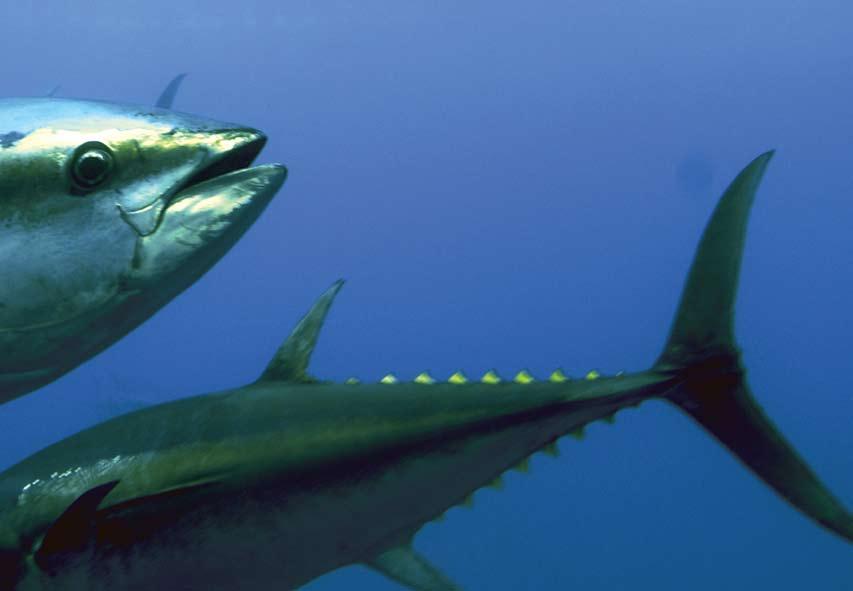
15 feet long, and can sustain bursts of speed up to 60 miles per hour in pursuit of prey. Warmblooded, they migrate across oceans, and females produce up to 30 million eggs each spawning season.
Bluefin tuna have fascinated and fed humans for millennia. The first evidence of bluefin fishing in the Mediterranean dates to the 7th millennium B.C.E. when the Phoenicians established fisheries using hand lines and primitive seine nets. Aristotle studied tuna in his “History of Animals,” written in 350 B.C.E., and contended that the enormous fish gorged for two years before bursting from overeating. Four hundred years later, Pliny the Elder recommended eating tuna to treat ulcers, suggesting the neck, belly and throat as the finest pieces that must be eaten fresh even though “they cause severe fits of flatulence.”
But it wasn’t until the late 20th century that that tuna became a global business. Sushi and sashimi exploded
continued >>
IN THE SPrING, Atlantic bluefin tuna return to the Mediterranean Sea to spawn in the place where they were born. Since tuna don’t reach sexual maturity until about age four and may only reproduce every two to three years, unfettered spawning is critical to the survival of the species.
Unfortunately, the European Union still allows fishing around Spain’s Balearic Islands in one of the bluefin’s favorite spawning areas. Oceana is working to close bluefin fishing in this area during the spawning season.
7 oceana.org
Mor E P hoto S oF t UN a FIShINg a ND Far MINg : www.oceana.org/newsletter
OCEANA CrEW aboard the MarViva Med spent the summer of 2008 documenting purse seiners and tuna fattening pens in an effort to better understand the fishing pressure on dwindling Atlantic bluefin tuna populations. Its crew, led by Oceana Vice President Xavier Pastor, had reason to celebrate in June when the European Union closed the purse seining bluefin season two weeks early, but MarViva Med’s work was far from over. The crew continued to work to ensure that the closure was enforced.
continued
in popularity in Japan and around the world, and consumers touted the fatty flesh of the bluefin as the most prized meat.
Purse seiners, which close drawstring nets around schooling fish, became larger and more sophisticated, and fattening cages dotted the seas starting in 1996. These cages, which can measure 50 meters across, may represent the biggest threat to bluefin survival.
BLUEFIN
Tuna, often juvenile, are captured and dumped in the cages – or “ranches” – for months to fatten up, with all the associated problems of aquaculture: disease, waste and overfishing of the smaller fish used to feed the bluefin.
Fishing for giant bluefin has become hugely profitable: In the 1960s, bluefin sold in the United States for seven cents a pound. This season, the first bluefin sold in Taiwan netted $105 a pound.
Despite this booming business, there is little understanding of how tuna populations work. Several bluefin fisheries have cropped up in the Atlantic, only to collapse within a few years. The North Sea fishery collapsed in 1963, and a Brazilian fishery appeared in the early ’60s only to vanish by 1967. No one knows why.
Current catch quotas set by the International Commission for the Conservation of Atlantic Tunas (ICCAT) are nearly impossible to enforce, as fewer than 5 percent of catches have been sampled independently in the last decade. Some conservationists estimate that the fishing industry took 50,000 metric tons of bluefin
from the Mediterranean by mid-June of this year – and the quota was set at 28,500 metric tons.
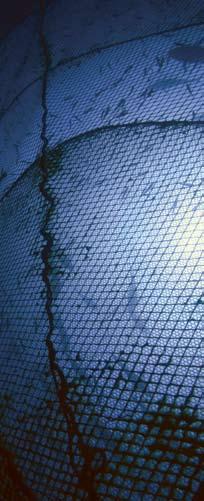
In two and a half months aboard MarViva Med this summer, Ellenbogen photographed undersized bluefin tuna circling in cages as well as dangling on the ends of fishing lines. He saw so many purse seiners clustering around schools of tuna that the horizon appeared nearly urban. What Ellenbogen didn’t see was evidence of abundant marine wildlife of any kind. “When we went diving, we saw nothing constantly,” he said.
The ICCAT has set a declining quota for Atlantic bluefin over the next few years as part of a 15-year recovery plan, reducing the total allowable catch to 25,500 metric tons in 2010. Scientists argue that it’s not enough –that bluefin need a generational breather to prevent total collapse. In the meantime, the data gathered by Ellenbogen and the rest of Oceana’s crew aboard the MarViva Med indicates that the quotas that are in place are not effectively enforced and are ignored by the tuna fleet.
“The laws continue to be disregarded and mocked. Hundreds of vessels continue fishing, the fattening farms continue receiving catches and the companies that supposedly should have concluded their activities continue obtaining profits while pushing the fishery to the limits of collapse,” said Xavier Pastor, Vice President of Oceana Europe. “The bluefin tuna fishery around critical spawning areas must be urgently and completely closed until the stocks can recover, and the implementation of this decision must be effectively monitored.”
ABOVE: Juvenile tuna removed from the wild to fatten in cages can’t help the species’ reproductive recovery. BLog
8 Fall 2008 <<
thIS SEaSoN, thE FIrSt
SoLD IN taIWaN NEttED $105 a PoUND.
r k EI th ELLENB ogEN:
ENr IES BY P hotogra P hE
www.oceana.org/newsletter
© OCEANA | Keith Ellenbogen
Long before he and his wife Beth joined Oceana’s Ocean Council, Dan Cort was a fish. Figuratively speaking, of course. “I’m a water guy,” Cort said. Growing up in San Francisco, he was a competitive swimmer, and even raced against Olympian Mark Spitz at a swim meet.
Now a certified diver, he tries to get in the water when he can, but as Pacific Grove’s mayor and the CEO of his own business, he doesn’t have much time for playing in the waves.
“I know this sounds crazy, but I’m someone that feels at home in the water and really wants to protect it,” Dan Cort said. “The oceans are 71 percent of the planet, and we’ve done a lousy job taking care of them, so I just felt obligated and committed to do this kind of work.”
Cort is especially concerned about industrial fishing.
“Andy Sharpless and Jim Ayers are leaders in the protection of our fisheries,” he said. “One of the things that is most important for me is the intensity with which they apply their creative and political energies to protect thousands of miles of ocean from industrial fishing.”
Cort and his wife of 18 years, Beth, are partners in a real estate business. The Corts started Trees for Pacific Grove, a volunteer-based organization which has raised $20,000 and replanted 2,000 trees in the city’s urban forest. And as mayor of Pacific Grove, Cort co-founded Sustainable Pacific Grove, a local environmental action group which developed a green cleaning products program and a ban on Styrofoam.
Dan and Beth Cort
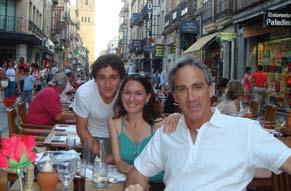
La MEr | WorLD oCEaN DaY
In addition to its donation, La Mer presented a limited edition World Ocean Day crème, available in 173 locations in North America and select La Mer counters around the world. Many La Mer counters in department stores featured the partnership on colorful displays.
Since 2005, La Mer has worked with Oceana to promote ocean protection and restoration. La Mer has supported Oceana’s Partners Award Gala, which honors outstanding work in the field of marine conservation.
In June, Oceana and La Mer celebrated World Ocean Day in New York City. The luxury skincare company presented Oceana with a $100,000 donation to aid the organization’s continuing battle to save the oceans.
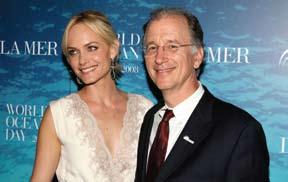
La Mer President Maureen Case recognized the impact of Oceana’s work to improve the health of the oceans. “This is only the beginning of a partnership that will last a long, long time,” she said.

9 oceana.org
oCEaN aDVoCatES
Dan, Beth and son Joshua Cort.
LEFT: Oceana CEO Andrew Sharpless with La Mer President Maureen Case and Oceana board member Ted Danson.
rIGHT: Sharpless and Oceana spokeswoman and actress Amber Valletta.
F or Mor E oN o CE a N a a ND L a ME r : www.lamer.com/oceana
© Getty Images | Andrew Walker
© Getty Images | Andrew Walker
S E a C ha N g E
In July, 450 people came out in Orange County, California, for the SeaChange Summer Party at the estate home of Bruce and Karen Cahill. The event, co-chaired by Valarie Whiting, Julie Hill and Ted Danson, raised a record $850,000 to help protect the world’s oceans.





The SeaChange Summer Party honored three conservationists: actor and board member of Conservation International, Harrison Ford; actor and Oceana board member Sam Waterston; and internationally-acclaimed sustainability expert John Picard. The honorees received awards designed by renowned artist Dale Chihuly.
“We have done great things before in human history. We can do it again,” said Ford in his acceptance speech. “Let’s not let this award be an empty vessel –let’s work for fundamental transformation – a real sea change in ocean policy.”
The SeaChange Summer Party is the first annual Orange County event recognizing the importance of the oceans as a vital ecosystem and honoring those who are actively helping preserve its delicate habitats and wildlife.
10 Fall 2008
The SeaChange Summer Party took place at the Laguna Beach home of Bruce and Karen Cahill.
Oceana board member Ted Danson, SeaChange co-chairs Valarie Whiting and Julie Hill, Oceana board chairman Keith Addis and Oceana CEO Andrew Sharpless.
Jami Baldwin, Nancy Baldwin, Diane Keaton and Betty Aiken.
Karen Cahill, honoree Harrison Ford, Calista Flockhart and Bruce Cahill.
Honorees John Picard, Harrison Ford and Sam Waterston.
Unless noted, photos this page © Michael Munson
© Alberto Rodriguez
greg k nize of Duke’s Malibu
Duke’s Malibu is named for Duke Kahanamoku, a genteel Hawaiian credited with popularizing surfing in the early 20th century. These days, the restaurant still honors Duke’s legacy with its Hawaiian-infused dishes.
Duke’s Malibu serves fresh fish with a tropical flair, and for years focused on classic Hawaiian fish such as opaka and onaga, or red snapper. In recent years, however, chef Greg Knize has shifted his focus to sustainable seafood as the traditional fish became susceptible to overfishing.
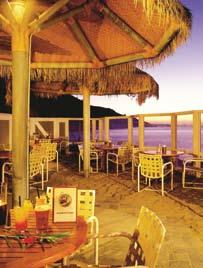
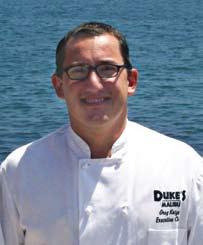
“We just decided we needed to look into this, because the future is here,” Knize said. “We started digging in our menu and taking it seriously.”
Duke’s still appeals to the Hawaiian palate with a menu dominated by passionfruit, pineapple and other tropical flavors. But instead of serving overfished species, Knize cooks with Pacific halibut, mahi mahi and other sustainable options.
ParMESa N hErB CrUS t ED PaCIFIC h a LIBU t
Ingredients
6 Pacific halibut filets, 7 oz. each
1 cup panko (Japanese breadcrumbs found in Asian section of most grocery stores)
½ cup shredded Parmesan cheese
2 tablespoons finely shredded fresh basil
1 tablespoon finely chopped parsley
2 teaspoons minced fresh thyme
2 teaspoons minced garlic
¾ teaspoon kosher salt
½ teaspoon ground white pepper
3 tablespoons medium-fine diced macadamia nuts
¼ cup olive oil
Buerre Blanc Ingredients
2 tablespoons finely minched shallots
2 tablespoons white wine
2 tablespoons fresh lemon juice
1 tablespoon cream
½ cup unsalted butter, room temperature
Salt, pepper to taste
2 tablespoons capers, drained and rinsed under running water
Preparation
For the Parmesan herb breading, combine in a bowl the panko, shredded Parmesan, basil, parsley, thyme, salt, pepper, garlic and macadamia nuts. Mix thoroughly. This breading, if kept in a tightly closed container in the refrigerator, will keep up to five days.
Press both sides of each piece of fish firmly in the crumb mixture using your hands to help the crumbs adhere. Heat ¼ cup olive oil in a large sauté pan over medium heat, add the breaded pieces of fish and sauté until golden brown and just cooked in the center.
Capers may be sprinkled over the fish and into the sauce.
Beurre Blanc
Put the minced shallots, white wine and lemon juice in an 8 inch sauté pan. Bring the mixture to a boil and reduce on high heat until the liquid is almost completely evaporated and becomes syrupy. Add the cream and reduce again. While the liquid is reducing, cut the butter into small pieces.
When the shallot mixture is fully reduced, take the pan off the heat and let cool slightly, then return the pan to very gentle heat. Add two pieces of butter to the pan and whisk until the butter melts. Look for wisps of gentle steam coming off the surface of the sauce indicating that the heat is high enough for the butterfat to properly emulsify. If the butter begins to separate, the heat is too high. Take the pan off the heat and whisk in a few pieces of butter until it is incorporated into the thick, creamy sauce. Season with salt and pepper.
Serve the halibut on top of the beurre blanc.
Duke’s joined o ceana as a partner in the Malibu Invitational: 2nd a nnual Invitational Shortboard Surf Contest, which took place Sept 27-28.
11 oceana.org
ChEF’S CorNEr
FIND o U t Mor
www.dukesmalibu.com
E:
© Duke’s Malibu
© Duke’s Malibu
toP: Duke’s Malibu chef Greg Knize. BOTTOM: The restaurant features oceanside views.
a bout oceana
Oceana campaigns to protect and restore the world’s oceans. Our team of marine scientists, economists, lawyers and advocates win specific and concrete policy changes to reduce pollution and to prevent the irreversible collapse of fish populations, marine mammals and other sea life. Global in scope and dedicated to conservation, Oceana has campaigners based in North America, Europe and South America. More than 300,000 members and e-activists in over 150 countries have already joined Oceana. For more information, please visit www.oceana.org.
Oceana’s accomplishments wouldn’t be possible without the support of its members. You can help Oceana fight to restore our oceans with your financial contribution. Call us today at 1.877.7.OCEANA, go to our Web site www.oceana.org/give and click on “give today” or use the envelope provided in this newsletter. You can also invest in the future of our oceans by remembering Oceana in your will. Please contact us to find out how. All contributions to Oceana are tax deductible. Oceana is a 501 (c) (3) organization as designated by the Internal Revenue Service.
Oceana’s Privacy Policy: Your right to privacy is important to Oceana, and we are committed to maintaining your trust. Personal information (such as name, address, phone number, e-mail) includes data that you may have provided to us when making a donation or taking action as a WaveMaker on behalf of the oceans. This personal information is stored in a secure location. Credit-card donations through the Web site are made via a secure server. Like other non-profits, Oceana may make contact information (not including e-mail addresses) available to other organizations we believe may be of interest to our members and supporters. If you would like to review the information in our files, correct it, or ask Oceana to refrain from sharing your contact information with other organizations, please contact us by writing us an e-mail at info@oceana.org, by calling Oceana’s membership department at +1.202.833.3900, or by writing to us at Oceana Member Services, 1350 Connecticut Ave. NW, 5th Floor, Washington, D.C. 20036. We will be happy to accommodate your request.
oCEaNa MEMBErShIP MEEtINg NotICE
Oceana will hold its 2008 annual membership teleconference on December 1, 2008 11:30 am eastern Standard time
Join us to hear about our successes and continued efforts to protect and restore the world’s oceans. Input from our members is important to us! Contact us to receive a brief questionnaire. Your thoughts and ideas will be shared during the teleconference.
To register for the teleconference or to obtain a copy of the questionnaire, contact us at: www.oceana.org/MembershipMeeting call 1.877.7.oceana, ext. 1927 Membership@oceana.org
Registration deadline: November 25th
1350 Connecticut Ave. NW, 5th Floor Washington, DC 20036 phone: +1.202.833.3900 toll-free: 1.877.7.OCEANA
Protecting the Wo rld’s Oceans
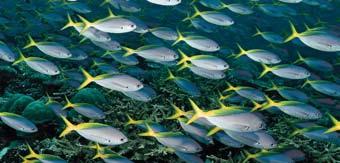
Global | Washington, DC europe | Brussels | Madrid north america | Anchorage | Boston | Juneau | Monterey | New York | Portland | St.
Oceana is published by Oceana Inc. For questions or comments about Oceana, or to subscribe to Oceana, please call Oceana’s membership department at +1.202.833.3900, e-mail membership@oceana.org or write Oceana, Member Services, 1350 Connecticut Ave. NW, 5th Floor, Washington, D.C. 20036, USA.
Petersburg South america | Santiago
Printed with Eco-Ink — low volatility vegetable oil-based ink on 25% postconsumer recycled, processed chlorine free paper produced using 100% wind power in a carbon neutral process.
© OCEANA|Brant Shenkarow
Give
today!






















